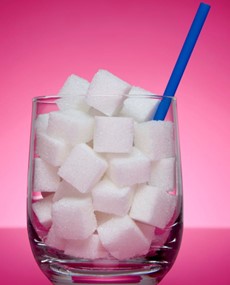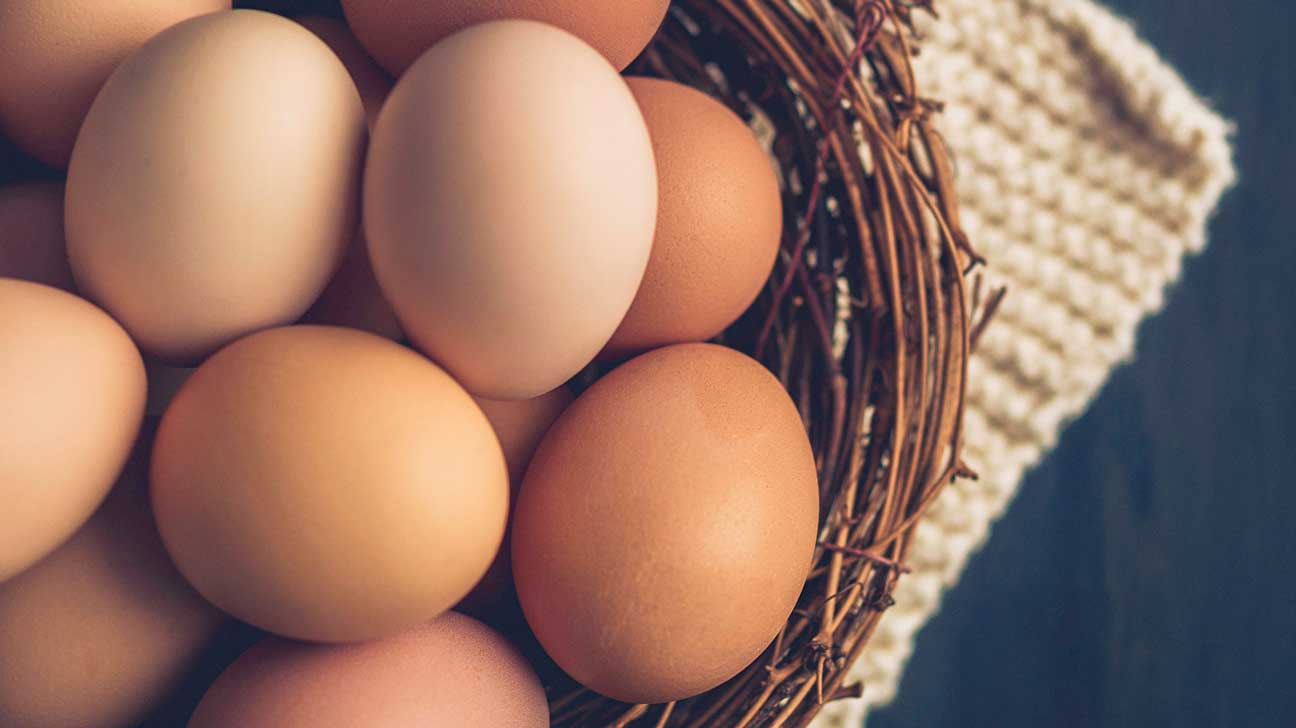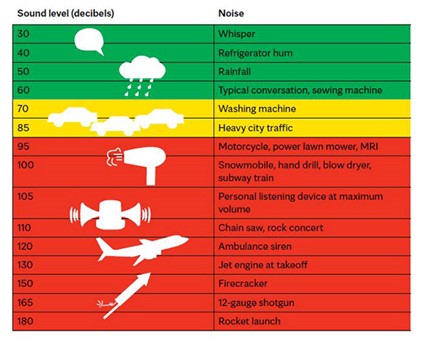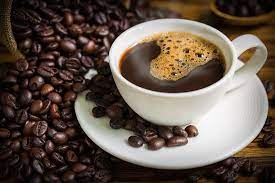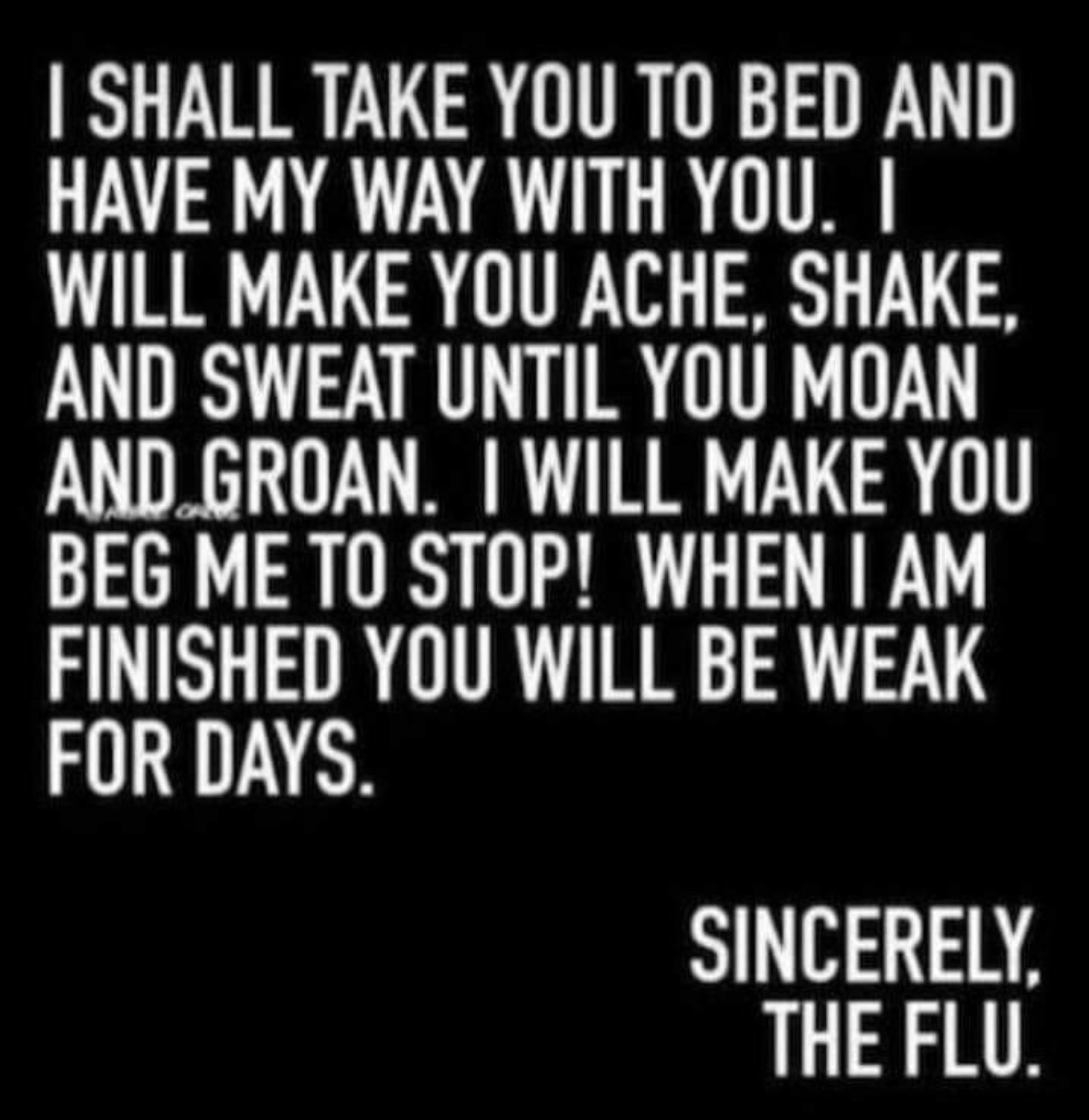|
|
||
|
||
|
Privacy Policy | Editorial Policy | Profit Policy | Join the Association | List of Members | Contact us | Index | Links |
||
|
Back Go to page: 1 2 3 4 5 6 7 8 9 10 11 12 13 14 15 16 17 18 19 20 Forward |
||
| Veterans and Veterans Families Counselling Service (VVCS) can be reached 24 hours a day across Australia for crisis support and free and confidential counseling. Phone 1800 011 046. VVCS is a service founded by Vietnam Veterans.
|
||
|
Health and Life-style. |
||
|
|
||
|
Contents.
|
||
|
|
||
|
Bananas have plenty of health benefits, but also some risks.
Bananas are a little pre-packaged serving of health, but sometimes there is too much of a good thing, they are high in potassium, a good source of vitamin B6 and Australians love them.
According to the Australian Banana Growers’ Council, we eat 16kg of them per person per year and they are one of Australia’s top-selling grocery items.
|
||
|
|
||
|
They also soothe the gut, thanks to their high pectin content that helps lower cholesterol and improve bowl function and they are great for exercising. Their combination of low water content and high sugar levels supplies an instant, yet sustained, boost of energy.
But of course, like anything, don’t eat too many. While bananas’ high potassium level is usually a good thing as potassium is crucial for survival, some people should take care, especially people with kidney disease who should be aware of their intake.
Patients who have very low kidney function can potentially see a build-up of harmful potassium levels in their bloodstream because they can’t get rid of the mineral when they pass urine, however, for everyone else, it’s almost impossible to overdose on bananas.
You would probably need around 400 bananas a day to build up the kind of potassium levels that would cause your heart to stop beating, they are not dangerous, in fact they are, and always have been, very good for you.
But if you have a latex allergy, you might also need to avoid bananas.
According to the Victorian Department of Health, up to half the people who have a latex allergy may also have an allergic reaction to bananas, avocados, chestnut, kiwifruit, passionfruit, plum, strawberry and tomato, because some of the proteins that cause allergic reactions to latex are also in these fruits. Common symptoms include tingling in the mouth, stuffy nose, itchy eyes and wheezing. Children with a banana allergy often grow out of it, but not so if you develop it later in life.
Bananas are also found to trigger migraine headaches, however, if not a trigger, they can be used to recover from an attack as they can provide a quick boost of energy.
Australia’s most popular banana is the Cavendish, named after the 6th Duke of Devonshire, William Cavendish, who cultivated them in the early 20th century in his massive greenhouse. (It was enormous, 84m long and required 300 tons of coal a year to heat.)
Technically, banana plants are giant herbs. In fact, it’s the largest flowering herbaceous plant and the fruit is classified as a berry. The bananas we eat are entirely cultivated by humans and wouldn’t exist without our intervention. Wild type bananas have chunky seeds throughout and are pretty much inedible.
Nine food and heart health myths busted.
Should you cook with butter or olive oil? Is that drink of red wine protecting your heart? Pink Himalayan salt is healthy, right?
There are plenty of food myths disguised as facts on the internet, discussed at dinner parties, and in magazines. It can be both confusing and contradictory. Let’s dive into nine common food and health myths and the facts behind them.
Myth 1: Butter is healthy for your heart.
Butter is used in cooking across the world. It’s very versatile and is used for sauteing, frying, greasing, baking and in sauces. Butter is not a health food and is something that should be limited in a heart healthy diet. Evidence shows a there is a relatively small or neutral risk between butter and mortality and heart disease. The problem is that butter raises both good and bad cholesterol levels, with the rise in the bad outweighing the benefit of the rise in good cholesterol. If you already have high cholesterol, butter can raise bad cholesterol levels even further.
Is butter part of a heart healthy diet? Butter should only be eaten sometimes and in small amounts. Swap butter for foods that reduce risk of heart disease, such as avocado, olive oil, nut butters, and spreads made from canola or olive oil.
Myth 2: Coconut oil is a healthy superfood.
Coconut oil has been the centre of a raging debate for the past few years. Named by some as a superfood, does it deserve this title? Coconut oil contains 92 per cent saturated fat. Even though this type of saturated fat is slightly different to that found in animal products, it doesn’t make it a healthy option. Coconut oil raises both good and bad cholesterol, with the rise in bad cholesterol outweighing the rise in good cholesterol. Like butter, coconut oil is not a health food. Coconut oil is something that should only be consumed occasionally and in small amounts. Go for healthier cooking oils instead, such as olive oil.
Myth 3: Sugar is toxic for heart health.
Sugar in food or drinks can be naturally occurring or added during processing. In recent years, sugar has been under attack, with some people aiming to completely eliminate it from their diets. There’s no scientific consensus that sugar as a nutrient causes heart disease, however, high intakes of added sugars and refined carbohydrates are linked to an increased risk of heart disease.
Too much sugar can increase the amount of energy (kilojoules) people consume and may lead to increased weight gain, which is a risk factor for heart disease. Your whole diet matters, not just one single nutrient like sugar. The bulk of the added sugars in Australian diets comes from junk foods, particularly sugary drinks. Limit or avoid these foods and drinks as part of your overall heart healthy diet.
Myth 4: Omega-6 fats can cause inflammation.
Food sources of omega-6 include nuts, seeds and their oils (including sunflower, safflower, sesame, canola and, to a lesser extent, olive oils). There are some claims that omega-6 fats promote inflammation and increase the risk of heart disease.
Omega-6 is an essential fatty acid, as the human body cannot make it naturally. Research has not found evidence about an association between inflammation and omega-6. You can include omega-6 rich foods as part of your heart healthy eating pattern. Overall, the scientific evidence strongly supports the benefits of polyunsaturated fats (PUFAs), including omega-6 polyunsaturated fats, in a heart healthy diet.
Myth 5: Saturated fat is healthy.
Saturated fat comes from many different sources, including meat, chicken, dairy products and palm and coconut oil. It’s also in discretionary or processed foods such as biscuits, pastries and takeaway foods. Saturated fats are unhealthier than unsaturated fats, but preferable to trans fats. The evidence supports reducing saturated fats in your diet and replacing them with unsaturated fats to reduce the risk of heart disease.
Swapping out saturated fat with wholegrains also reduces your risk of heart disease, but not to the same extent as with unsaturated fat. Substituting saturated fat with refined carbohydrate doesn’t reduce the risk of heart disease. Junk food and drinks are the leading contributors to saturated fat intake. Cut down on these foods by replacing them with heart healthy foods. Get more healthy fats in your diet from sources such as nuts, seeds, avocados, olives and their oils, and oily fish.
Myth 6: Pink Himalayan salt is healthier.
Salt now comes in a range of varieties. As more options become available, the myths about salt and health have started to grow. So, is pink Himalayan salt actually healthier?
It’s true that some gourmet salts do contain trace minerals not found in table salt, but only in tiny amounts. These minerals can be found in larger quantities in healthy foods such as vegetables. Sodium and chloride are in all types of salt (table salt, pink salt, rock salt, black salt, etc.) and it’s the sodium that can be damaging to health. Too much of any type of salt can lead to high blood pressure, which is a leading risk factor for heart disease.
The maximum daily amount of salt you should eat is about a teaspoon (5g). One way to cut down on salt is to use herbs and spices in cooking or to season your meals.
Myth 7: You shouldn’t cook with olive oil
People are often concerned about cooking with olive oil due to the smoke point. Olive oil is a healthy and versatile oil that you can use in a variety of cooking methods. It is a great option for medium-temperature frying (i.e., stir frying or warming food in a pan). Oils that are suitable for high-temperature frying (e.g., deep frying) include extra virgin olive oil, high oleic canola oil and high oleic peanut oil, as they are more stable at high temperatures.
Myth 8. Dark chocolate and red wine are good for your heart
You might hear this myth over a glass of red at a dinner party with a vague reference to antioxidants and polyphenols. Unfortunately, it’s a classic case of it being a bit too good to be true. Antioxidants are naturally occurring agents or compounds in foods that may protect your cells against free radicals. There’s a lack of consistent evidence to confirm that the antioxidants in red wine can either prevent heart disease or be beneficial after a heart attack. The quantity of alcohol drunk is more important than the type of alcohol.
While red wine contains a variety of polyphenols (the amount varies greatly between each bottle), it is not a good source of antioxidants for preventing heart disease. The good news is that consuming high polyphenol cocoa/chocolate can reduce risk factors for heart disease, however, most manufactured chocolate is low in these substances. Dark chocolate doesn’t necessarily mean the presence of high amounts of polyphenols as manufacturers aren’t obligated to put these on their nutrition information panels, so reading labels doesn’t help.
Raw cocoa powder does have high levels of polyphenols and it’s recommended to use raw cocoa powder in drinks and cooking.
Myth 9. Reduced-fat milk is healthier.
You have a lot of choices when it comes to milk but is reduced fat actually healthier for your heart? Milk can be included in a heart healthy diet, but there is mixed evidence about whether full-fat or reduced-fat products are the healthiest option. Some studies show one is better than the other, while others say there is no difference. There isn’t enough conclusive evidence to recommend one over the other so it’s up to you whether you choose to have reduced-fat or full-fat milk – as long as it’s unflavoured.
The fat in dairy raises cholesterol, which for most healthy people is not an issue, however, if you have existing heart disease or high LDL cholesterol, then it’s best to choose reduced-fat milk products. Whether you choose reduced-fat or full-fat milk, a heart healthy diet is about the combinations of foods you eat over days and weeks.
Myths start for all sorts of reasons and there may even be elements of truth in some. To separate fact from fiction, trust authoritative sources, such as government or peer-reviewed scientific publications, for credible information. And remember that leading a healthier life is all about balance.
|
||
|
100 years ago everyone owned a horse and only the rich had cars. Today everyone owns a car and only the rich have horses.
|
||
|
Eggs are good for your health, but how many?
The health benefits, or dangers, of eggs has meandered wildly in past decades, with some studies saying they are too high in cholesterol and others finding they are high in good cholesterol.
So what does the latest research say about the health – or otherwise – of eggs?
|
||
|
|
||
|
For egg lovers, there’s good news, and especially for your heart. A study conducted in China three years ago demonstrated a significantly lower risk of heart and stroke in those who ate an egg a day compared to those who consumed them less frequently. Now, scientists have cracked the code (and no doubt many eggs) as to why that occurs. And the answer does indeed revolve around cholesterol – good and bad.
A new study, conducted by the same researchers who ran the first study, has identified 24 metabolites associated with the consumption of eggs, and zeroed in on a protein in blood called apolipoprotein A1.
Apolipoprotein A1 is a building block of high-density lipoprotein (HDL), which is known by laypeople as good cholesterol. Not only is HDL a good cholesterol in and of itself, it also does a very good job of clearing away low-density lipoprotein (LDL), which we know as bad cholesterol. The good guys, HDL molecules, absorb the bad guys, LDL molecules, and carry them to the liver, where they are flushed from the body.
These benefits were borne out in the new study, for which the researchers recruited 4778 participants from the China Kadoorie Biobank, 3401 had a cardiovascular disease, 1377 did not. Using a technique known as targeted nuclear magnetic resonance, the researchers measured 225 metabolites in plasma samples taken from the participants’ blood. As the name suggests, metabolites are substances that are involved in the process of metabolism, which involves the body breaking down food and other chemicals, and converting them to energy. Metabolites are either used in the process or produced by the process.
The study’s author, Canqing Yu, Associate Professor at the department of epidemiology and biostatistics at Peking University, said: “Together, our results provide a potential explanation for how eating a moderate amount of eggs can help protect against heart disease.” Prof. Yu did add a caveat, though: “More studies are needed to verify the causal roles that lipid metabolites play in the association between egg consumption and the risk of cardiovascular disease.”
But the signs are positive. In China, the dietary recommendation is for an egg a day, but the average consumption is lower than that. It’s the same in Australia, where we each consume an average of 249 eggs per year.
So if you love eggs and you’re averaging fewer than one per day, the good news is you can add a few more to your diet and it will likely be doing you good, rather than harm.
Health tips: How loud is too loud?
Every day, people are surrounded by noise. The bustle of traffic, the hums and grinds of machinery, people talking, music and chatter from the radio and aircraft flying overhead are all examples. Most people probably think nothing of these familiar sounds. They generally aren't loud enough to interfere with daily routines or cause ear damage, but sometimes a noise is too loud and some sounds may cause permanent damage.
Nearly 1 in 4 people in the United States ages 20 to 69 has some degree of hearing loss caused by exposure to loud sounds or noise at work or in leisure activities. Noises that aren't as harmful to your ears tend to fall below 60 decibels. From there, the higher the sound level, the more damage your ears can experience. Check the chart at right (click it to get a bigger view) to see which sounds you're exposed to on a regular basis and think of ways you can improve your hearing protection.
How loud is too loud? Here's a good rule of thumb: If you have to shout in order to be heard by someone an arm's length away, you're being exposed to too much noise.
Although noise-induced hearing loss usually can't be restored, you can prevent it. Here's how:
While hearing loss caused by recreational activities is becoming more common, hearing protection is most helpful when you wear it for the entire time you’re exposed to loud noise.
|
||
|
Why don’t the 99% of us who aren’t offended by everything quit catering to the 1% who are.
|
||
|
Scientists find coffee is good for your health.
It’s no secret coffee helps us kickstart the day, switching us from sleepy to alert, but do you find it kicks your digestive system into action too?
If you are someone who relies on your morning brew to help kickstart your inner workings, you really aren’t imagining this – there’s science to back it up. A new scientific review published in the journal Nutrients, sponsored by The Institute for Scientific Information on Coffee (ISIC), looked at evidence from 194 research publications on various ways coffee may affect our health, including how it stimulates the digestive process and increases good gut bacteria.
Drinking coffee is associated with colon motility, the process of food moving through the digestive tract. It has been demonstrated for a long time that people really look for their morning coffee to give them energy, to have the feeling that they are finally awake, they can start their day, for the digestive side, for about 60 per cent of the population, drinking coffee in the morning helps them to defecate, it stimulates [the process.
It’s no wonder this is part of the appeal of a morning coffee for lots of people, it’s a double-whammy boost that makes us “feel better”. The review found links with coffee consumption and changes in the microbiome, the billions of microbiota or bacteria that live in our guts. A main finding was around levels of Bifidobacteria4-8, a known ‘good bacteria’ associated with a host of health benefits.
How exactly it impacts our overall health is “complex” because we’re talking about billions of bacteria and “the exact composition of the microbiome of each individual is different, however, in a general sense, there’s strong emerging evidence that it plays an extremely important role in overall health and function and there is a “real demonstrated link between gut bacteria and the brain”. When you compare individuals without coffee and with coffee, you see that the individuals who drink coffee have changes in their microbiota and you find a tendency to increase what we consider ‘good bacteria’…
What if you are putting sugar in your coffee?
Other studies have indicated that certain things can be detrimental for our gut microbiome, including too much sugar. Does that mean adding lots of sugar to our coffee could undo any positive effects on our gut bacteria?
This isn’t conclusive, It has been demonstrated that eating too much sugar is not good for your diet, but specifically for the gut microbiota, having too much sugar in your coffee and what the consequences are, in this sense, is unknown.
What if you drink too much coffee?
The thing about coffee is the effects aren’t always universal, and even those of us who love our morning caffeine boosts are aware there’s a tipping point. Too much might leave us feeling jittery and anxious, for example, and can seriously hinder our sleep. Is there evidence that too much coffee might undo any positive effects for our digestive systems? We don’t really know as this link is not something that has been studied either.
There is a general conclusion that to benefit the most from the potential positive effects of coffee on health, people should be advised to drink up to three-five cups a day, not more, but there is no specific indication for the digestive system.
|
||
|
Being white doesn’t make you a racist and being black doesn’t make you a slave. Being an idiot however comes in both colours.
|
||
|
Do men really take longer to poo?
Are they struggling? Are they hiding? Are they waiting for the kids to leave home?
There’s a common assumption that men take longer than women to poo, but is that right and if some people are really taking longer, is that a problem?
As we sift through the evidence, it’s important to remember pooing may involve time spent sitting on the toilet and the defaecation process itself and there may be differences between men and women in these separate aspects of going to the toilet but the evidence for these differences isn’t always as strong as we’d like.
Men may spend longer sitting on the toilet.
Men do appear to spend more time sitting on the toilet. An online survey by a bathroom retailer suggested men spend up to 14 minutes a day compared with women, who spend almost eight minutes a day, but this survey doesn’t have the rigour of a well-designed scientific study.
Would there be any physiological reason to explain why men spend longer on the toilet? Well, the evidence actually suggests the opposite. We know it takes longer for food to travel through the intestines in women than in men. Women are also more likely to suffer from constipation related to irritable bowel syndrome than men. So, you’d expect women to take longer to defaecate, from the start of the bowel motion to expulsion. But this is not the case even if you take into account differences in fibre intake between men and women.
Instead, how long it takes someone to poo (the defaecation time) is heavily influenced by the mucus lining the large bowel. This mucus makes the bowel slippery and easier for the stools to be expelled, but there’s no evidence this mucus lining is different in men and women. One thing we do know, however, is mammals from elephants to mice have a similar defaecation time, around 12 seconds.
For humans, it’s slightly longer, but still quick. In one study it took healthy adults an average two minutes when sitting, but only 51 seconds when squatting. Again, there were no differences in defaecation time between men and women, whether sitting or squatting. If there’s no strong evidence one way or the other to explain any gender differences in how long it takes to poo, what’s going on? For that, we need to look at the total time spent on the toilet.
Why do people spend so long on the toilet?
“Toilet sitting time” is the time of defaecation itself and the time allocated to other activities sitting on the toilet. For most people, the time spent just sitting, aside from defaecating, accounts for most of their time there. So what are people doing? Mainly reading. And it seems men are more likely to read on the toilet than women. For instance, a study of almost 500 adults in Israel found almost two-thirds (64 per cent) of men regularly read on the toilet compared with 41 per cent of women. The longer people spent on the toilet, the more likely they were to be reading, however, in the decade or more since this study was conducted, you’d expect adults would be more likely to be reading or playing games on their mobile phones rather than reading paper books.
People might also be sitting longer on the toilet for some temporary relief from the stresses of life. One poll found 56 per cent of people find sitting on the toilet relaxing, and 39 per cent a good opportunity to have “some time alone”. Another online survey revealed one in six people reported going to the toilet for “peace and quiet”. Although these are not scientific studies, they offer useful insights into a social phenomenon.
Then there can be medical reasons for a prolonged defaecation time, and consequently a lengthier time sitting on the toilet.
An anal fissure (a tear or crack in the lining of the anus) can make defaecation a painful and lengthy process. These fissures are just as common in men as in women and obstructive defaecation, where people cannot empty the rectum properly, is a common cause of chronic constipation. This is more common in middle-aged women.
Are there any harms from spending too long on the loo?
In a Turkish study, spending more than five minutes on the toilet was associated with haemorrhoids and anal fissures. Another study from Italy noted the longer the time people spent on the toilet, the more severe their haemorrhoids. One theory behind this is prolonged sitting increases pressure inside the abdomen. This leads to less blood flow into the veins of the rectum when passing a bowel motion, and ultimately to blood pooling in the vascular cushions of the anus. This makes haemorrhoids more likely to develop.
What can we do about this?
In addition to the usual advice about increasing the amount of fibre in your diet and ensuring you drink enough water, it would be sensible to limit the amount of time spent on the toilet. Different researchers recommend a different upper limit, but others recommend the SEN approach:
(PS: You can't say we don't bring you ground-breaking stories here!)
|
||
|
Society has now reached the point where everybody has a right but nobody has a responsibility.
|
||
|
How to turn potatoes into a health food.
One simple trick can unlock the health potential of the humble spud.
Ask people if they eat the recommended five servings of vegetables daily and you’ll often be met with some variation of the response ‘potatoes are a vegetable, right?’ While this is technically true, potatoes are high in starch and are often prepared in unhealthy ways but the humble spud gets a bit of a bad rap, because we love to fry them up in oil and batter. Baked potatoes are far healthier, but even then we tend to fill them with all kinds of fatty and oily toppings.
|
||
|
|
||
|
Another reason they are often maligned is their high starch content. Starch is a complex carbohydrate, meaning it is a string of joined glucose (sugar) units. It’s an important part of your diet and one of the major sources of food energy.
When highly processed, potatoes, such as those sliced, fried and turned into chips are high in refined starches. Refined starches are digested quickly in the small intestine, raise blood sugar levels and increase insulin resistance, which are all leading risk factors for type 2 diabetes, but by baking potatoes and then allowing them to cool, the starches inside are turned into what’s known as resistant starch. This type of starch is so named because it is resistant to digestion in the small intestine and passes through unscathed to the large intestine, where it becomes food for beneficial gut bacteria.
This process stimulates the production of butyrate, a chemical compound that is key to keeping the gut healthy and functioning normally.
Butyrate is the preferred fuel for cells lining the gut and ensuring the integrity of the gut wall, helping to protect it against cancer and other serious digestive diseases. Resistant starch also offers health benefits beyond those in the gut, such as helping to reduce your risk of type 2 diabetes by increasing the body’s sensitivity to insulin. This effect can be seen in other high-starch foods such as pasta and rice. Try cooking both of these and then allowing cool to substantially boost the amount of ‘good’ starch you’re eating.
|
||
|
|
||
|
Resistant starch occurs naturally in legumes such as lentils, chickpeas, red kidney beans and baked beans, nuts and some seeds and firm bananas. The best sources are wholegrain cereals and legumes. Baked potatoes with a dash of salt and pepper can be a tasty and healthy side dish, but there are even tastier ways to prepare a baked spud that preserve all the health benefits. Rather than dressing your baked potato with butter, try using hummus, salsa or even a low-fat cheese sauce.
As for the classic filled baked potato, avoid highly processed meats and dairy as fillings. Try our recipe for baked potatoes with eggs, or this delicious recipe using lean turkey mince, low-fat cheese and spices as a filling.
|
||
|
I never thought I’d be the kind of person who’d wake up early in the morning to exercise. And I was right!
|
||
|
|
||
|
.
|
||
|
|
||
|
Back Go to page: 1 2 3 4 5 6 7 8 9 10 11 12 13 14 15 16 17 18 19 20 Forward |
||





